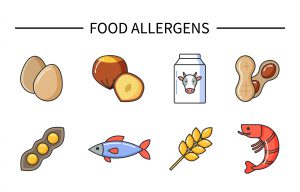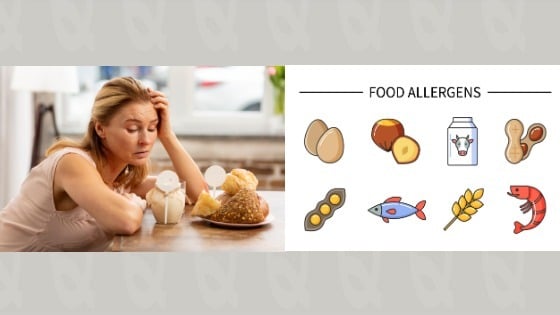In 2004, responding to an increase in foodborne illnesses caused by allergens, the United States Congress passed the Food Allergen Labeling and Consumer Protection Act (FALCPA). Implemented in 2006, FALCPA established clear guidelines for labeling foods regarding the presence of allergens, providing consumers with more straightforward and accessible information to protect their families and themselves. The law established the “Big 8” allergens responsible for over 90% of food-related anaphylactic reactions: Milk, Eggs, Fish (e.g., bass, flounder, cod), Crustacean Shellfish (e.g., crab, lobster, shrimp), Tree Nuts (e.g., almonds, walnuts, pecans), Peanuts, Wheat, Soybeans. In 2006, the FDA estimated that approximately 30,000 consumers required emergency room treatment each year because of allergic reactions to food. Today the Centers for Disease Control and Prevention (CDC) estimate that number is closer to 200,000.
Focus on FSMA
While providing more useful data for consumers, FALCPA did not address preventing allergen adulteration in foods, and by 2010, the occurrence of foodborne contamination by the Big 8 allergens matched illnesses caused by foodborne pathogens and viruses. Consequently, when the Food Safety Modernization Act (FSMA) became law in 2011 it directly addressed allergens as a food adulterant and stipulated preventive control of allergens be a part of a manufacturer’s Food Safety Plan.
By 2015 the presence of undeclared allergens was the number one cause of food recalls. Estimates indicate that more than 26 million adults in the U.S. have food allergies, including 5.6 million children. For this reason, the strategy for preventing allergen contamination, spelled out in FSMA, continues to be addressed by manufacturers and scrutinized by regulators.
Compliance with FSMA requires a Food Allergen Control program, defined as “written procedures the facility must have and implement to control allergen cross-contact and ensure allergens are appropriately listed on the labels of packaged food products.” The goal of the program is “prevention of allergen cross-contact and cross-contamination from insanitary objects and from personnel to food, food packaging material, and other food-contact surfaces and from raw product to processed product.”
Two primary components of an effective and robust Food Allergen Control program are Cleaning Validation and Verification.
What’s the difference between Cleaning Validation and Cleaning Verification?
Validation is confirming that the most effective cleaning methods are instituted from the beginning.
Verification is ensuring validated cleaning methods are being properly implemented.
Validation of the cleaning process is the first step of an Allergen Control program. The procedure should confirm that the cleaning is adequate to reduce the opportunity of allergen cross-contamination between products. The Validation should be performed using a “worst-case scenario,” meaning the analyst should use the product with the highest content of an allergen, particularly if it is a product that is difficult to remove from equipment. Also, the procedure should utilize the lowest acceptable levels of sanitizer and water pressure/temperature. It is also recommended to use the most sensitive allergen detection method available for the Validation process. If preferred, the analyst may “spike” sample(s) with known allergen standards, allowing for accurate, quantitative measurement of the cleaning process.
Validation should include swab testing of food-contact surfaces as well as food product analysis. If a swab provides a positive result, that does not mean there was enough contaminant to adulterate the product. Swab sampling can reach areas the product may not, and swab samples are often more sensitive than product samples due to the lack of interference by other ingredients. Currently, the most accurate and sensitive allergen methods are ELISA-based. However, if the plan is to use Lateral Flow Devices (LFD) during future cleaning verifications, it is recommended to include the devices in the validation step as well.
Personnel performing the Validation should meticulously document each step of the protocol and execute each step accordingly. Documentation of the results of the Validation is also vital to meet the FSMA guidelines and satisfy an FDA Investigation. A Validation report should include information about products, analytes, equipment used, methods used, and results of laboratory testing.
 After Validation is completed and documented, the Verification of the validated cleaning process is the next step and repeated, periodic Verification should remain an ongoing part of the Allergen Control Program. Each facility must determine the frequency of performing Verification and the proper protocol to use. Verification is used to demonstrate that during subsequent applications, the cleaning program meets objectives and effectively minimizes allergen hazards. Verification is defined by the FDA as “the application of methods, procedures, tests and other evaluations, in addition to monitoring, to determine whether a control measure or combination of control measures is or has been operating as intended and to establish the validity of the Food Safety Plan.”
After Validation is completed and documented, the Verification of the validated cleaning process is the next step and repeated, periodic Verification should remain an ongoing part of the Allergen Control Program. Each facility must determine the frequency of performing Verification and the proper protocol to use. Verification is used to demonstrate that during subsequent applications, the cleaning program meets objectives and effectively minimizes allergen hazards. Verification is defined by the FDA as “the application of methods, procedures, tests and other evaluations, in addition to monitoring, to determine whether a control measure or combination of control measures is or has been operating as intended and to establish the validity of the Food Safety Plan.”
PCQI Performance
FSMA requires that a Preventive Control Qualified Individual (PCQI) participate in crafting the Food Safety Plan. For smaller firms that cannot afford a PCQI on staff, many qualified testing laboratories can provide PCQI services on an hourly basis. In addition, testing labs often possess the experience and expertise to help food companies design and execute the Validation and Verification procedures.
Establishing a well-documented and consistent Allergen Control Program as part of a thorough Environmental Monitoring and Sanitation Control strategy provides regulatory compliance with peace of mind knowing that appropriate measures are in place to prevent allergens from adulterating products. Data collected can also justify specific allergen-free claims on product labels.
Q Laboratories can provide services to help you meet the requirements of an Allergen Control program including PCQI services, materials (swabs, sponges, sample containers, coolers), and ISO Accredited Allergen Testing. Contact us today to work with an analyst to design a program that meets your needs.





